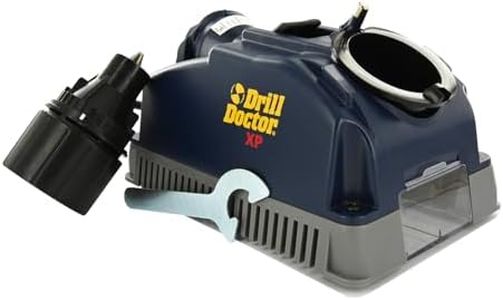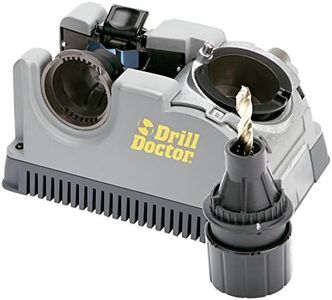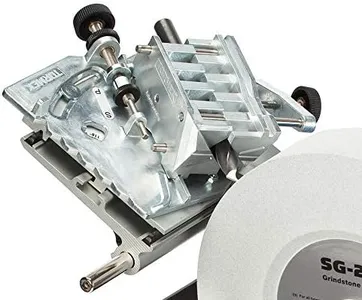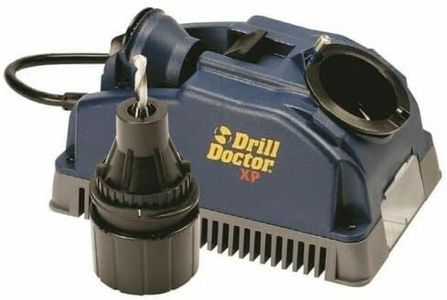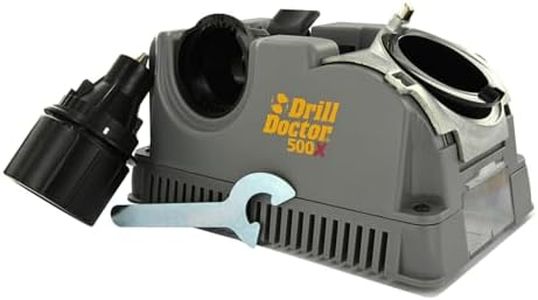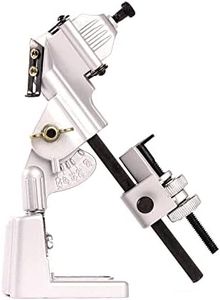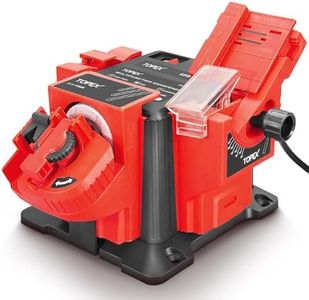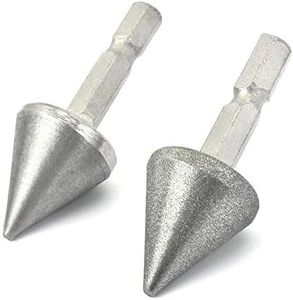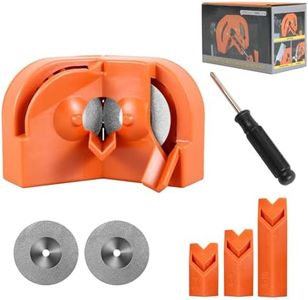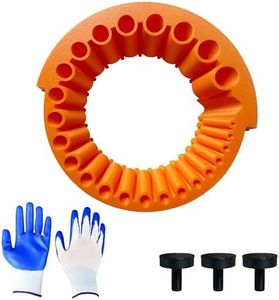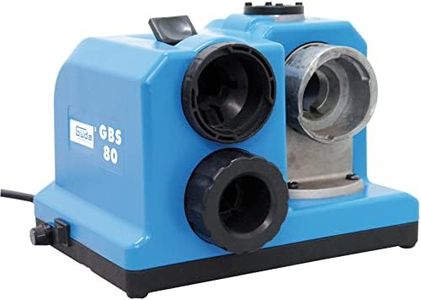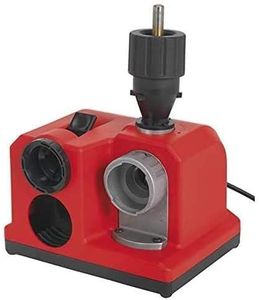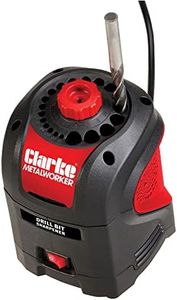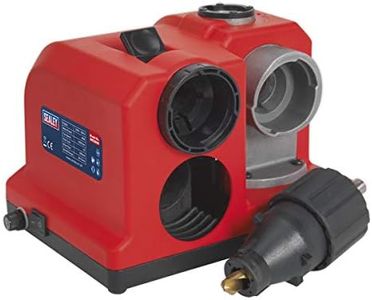We Use CookiesWe use cookies to enhance the security, performance,
functionality and for analytical and promotional activities. By continuing to browse this site you
are agreeing to our privacy policy
10 Best Drill Bit Sharpeners
From leading brands and best sellers available on the web.Buying Guide for the Best Drill Bit Sharpeners
Choosing a drill bit sharpener is all about ensuring your drill bits stay effective and help you achieve clean, precise work over time. A good sharpener will save you money, reduce frustration from dull bits, and make your projects smoother. It's essential to consider what types of bits you use, how often you need sharpening, and how much effort you want to put into the process. Understanding the main features will help you select a sharpener that fits your needs perfectly.CompatibilityCompatibility refers to the range of drill bit sizes and types that the sharpener can handle. Not all sharpeners work with every kind of bit or cover all diameter sizes. Some are made specifically for standard twist bits, while others might also handle masonry, cobalt, or split-point bits. Before picking a sharpener, check the bits you use most often. If you mostly work with standard bits in common sizes, a basic model may do. If you have a variety of bits, or larger/specialized versions, look for a sharpener that clearly lists compatibility with those sizes and styles—this ensures you can sharpen everything you need.
Sharpening MechanismThe sharpening mechanism is the way the tool actually grinds and reshapes the bit's tip. This can range from manual hand-cranked designs to electric models with rotating grinding wheels. Manual sharpeners require more effort and precision from you, which might be better if you only occasionally sharpen and want more control. Electric sharpeners offer speed and convenience, making them a solid choice for frequent use or for those less confident in their sharpening skills. Think about how much time and effort you want to spend—if you sharpen a lot, an electric option might suit you best.
AdjustabilityAdjustability means how easily you can set the sharpener to match different angles and bit types. Drill bits are often ground at different point angles (like 118° or 135°), depending on their intended use. Some sharpeners let you adjust these angles, while simpler models are fixed. If you're working with a variety of bits or need specialized tip shapes, an adjustable sharpener gives you more flexibility. If you mostly use one kind of bit, a fixed-angle sharpener can be quicker and simpler.
Ease of UseEase of use covers how straightforward the sharpener is to operate, from setting up the bit to making adjustments and actually sharpening. Some models come with clear guides and jigs to hold the bit at just the right angle, while others may require more manual skill. If you're newer to sharpening, look for features like guides, clear instructions, and minimal setup steps. More advanced users might appreciate the ability to customize settings, even if it requires a bit more time to learn.
Portability and SizePortability and size refer to how easy it is to move or store the sharpener. Compact, lightweight sharpeners are good if your workspace is limited or if you want to take the sharpener to job sites. Larger, heavier units are usually more stable and may handle bigger jobs, but take up more space. Consider where you'll use and store the sharpener; if you value convenience and flexibility, portability becomes important, while a permanent workshop setup favors more robust models.
DurabilityDurability describes the overall build quality and how long the sharpener will last under regular use. Sharpeners made from sturdy materials like metal components, quality grinding wheels, and solid enclosures are more likely to stand up to frequent use and accidental bumps. Cheaper, plastic-heavy options may be fine for occasional sharpening but might not hold up to years of regular use. If you plan to use the sharpener often, prioritize a well-built option that will serve you reliably.
